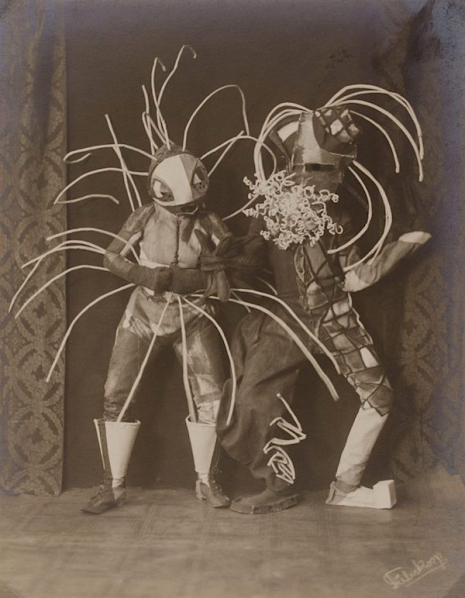
Lavinia Schulz and Walter Holdt were a wife and husband partnership briefly famous in Germany during the early 1920s for their wild, expressionist dance performances consisting of “creeping, stamping, squatting, crouching, kneeling, arching, striding, lunging, leaping in mostly diagonal-spiraling patterns” across the stage. Shulz believed “art should be…an expression of struggle” and used dance to express “the violent struggle of a female body to achieve central, dominant control of the performance space and its emptiness.”
In his book, Empire of Ecstasy—Nudity and Movement in German Body Culture, 1910–1935, author Karl Toepfer notes that “Husband-wife dance pairs are quite rare on the stage; in the case of Schulz and Holdt the concept of marriage entailed a peculiarly deep implication in that it also referred to a haunting marriage of dance and costume.”
The couple created dances and costumes together and at the same time, so that bodily movement and the masking of the body arose from the same impulse. Schulz was a highly gifted artist whose drawings and sketches invariably startle the viewer with their hard primitivism and demonic abstraction, but Holdt assumed much responsibility for the design of the costumes and masks; for most of the costumes deposited in Hamburg, it is not possible to assign definite authorship to Schulz. The mask portions consisted mostly of fantastically reptilian, insectoid, or robotic heads, whereas the rest of the costumes comprised eccentric patchworks of design, color, and material to convey the impression of bodies assembled out of contradictory structures.
According to Toepfer, these costumes “disclose a quality of cartoonish, demonic grotesquerie rather than frightening ferocity.” The couple gave these designs descriptive names like Toboggan, Springvieh, and Technik, which they also used as titles for their performances. Their designs sought something pagan, pre-Christian, that tapped into the “redemptive organic forms of nature and the animal world.”
Little is known about Holdt. What is known about Schulz could be written on a postcard. Born in Lübben in 1896, Schulz studied dance and performance in Berlin in 1913. She became associated with the Expressionists who rebeled against the rigid, traditional forms of art in favor of a more subjective perspective. In dance, this meant abandoning the austere, mechanical, and precise choreography of ballet for more expressive, fluid, and personal interpretations. Schulz moved to Hamburg, where she married Holdt in April 1920. The couple had a tempestuous relationship. Schulz has been described as possessive and jealous, while Holdt was considered “untrustworthy” which I take to mean he played around a lot. The difficulties and emotional insecurities in their relationship fed into their work. According to Toepfer:
The Schulz-Holdt dance aesthetic does seem to embed a powerful masochism, not only in the marriage between dancers but in the equally passionate marriage of mask and movement. But the dances of this strange couple were also a kind of bizarre, expressionist demonization of marriage itself, the most grotesquely touching critique of pairing to appear in the whole empire of German dance culture.
The couple moved away from Expressionism and sought inspiration from the supposed purity of pre-Judeo-Christian, Aryan-Nordic culture—which kinda almost sounds vaguely National Socialist. They lived an austere existence in direst poverty. Their home was basically one room with little in the way of amenities or even a bed—they slept on straw. They wanted to live without money and desired a society where everyone was given an equal share on the basis of their needs. Between 1920-24, the couple performed their dance routines to the bewildered and often antagonistic audiences of Hamburg. Though some critics appreciated the pair’s talent and startling originality, this praise was never enough to pay the rent.
In 1923, Schulz gave birth to a son. In 1924, the couple were photographed in their costumes by Minya Diez-Dührkoop. That same year, on June 19th, four days before her birthday, Schulz, no longer able to withstand Holdt’s (suspected) adultery, shot her husband in a jealous rage several times at point blank range before turning the gun on herself. The couple were discovered dead lying on their bed of straw with their infant son between them.
Schulz and Holdt would have been long forgotten had not their designs and costumes been gifted to the Museum für Kunst und Gewerbe Hamburg (MKG) in 1925. These precious artefacts were rediscovered in 1989 and are available to view online in the full glory of color.
Below are some of Diez-Dührkoop’s original photographs from 1924 of Shulz and Holdt’s costumes.
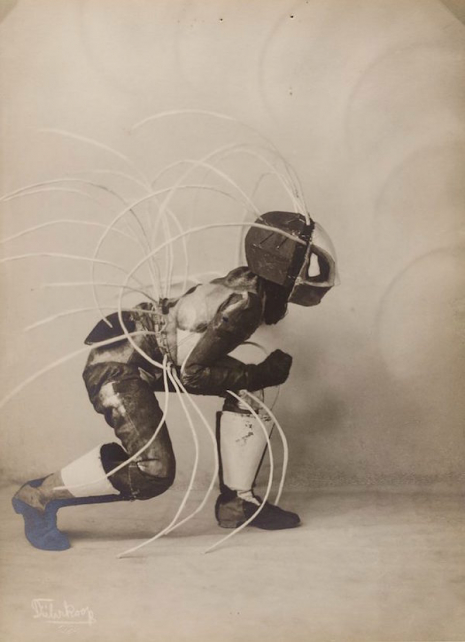
‘Toboggan.’

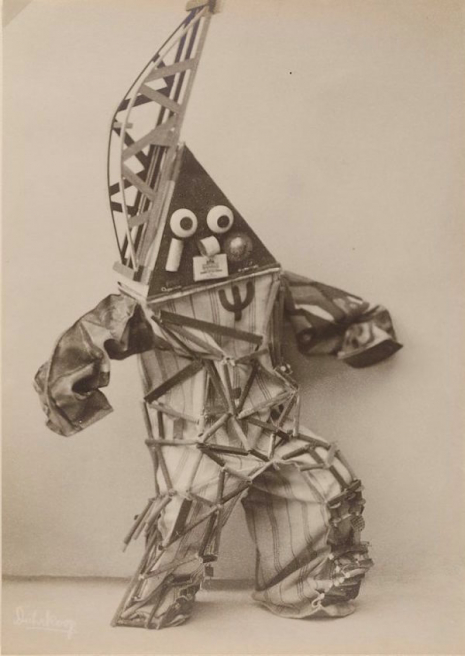
‘Technik.’
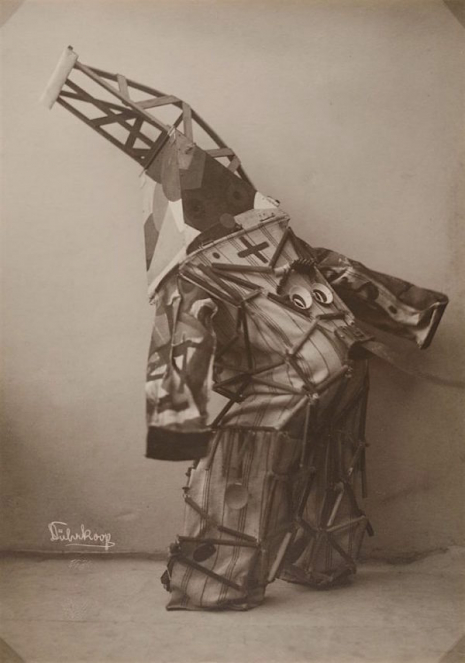
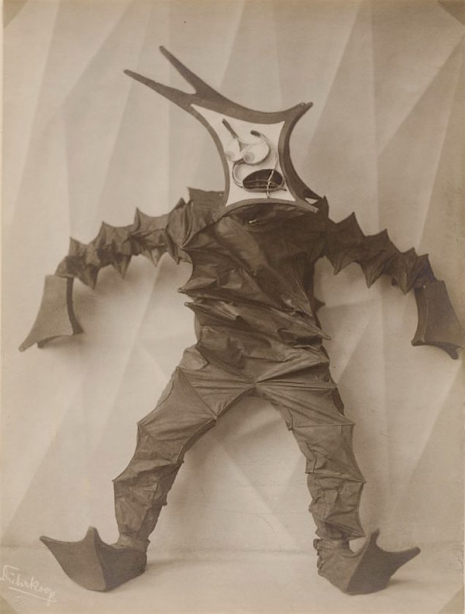
‘Springvieh.’

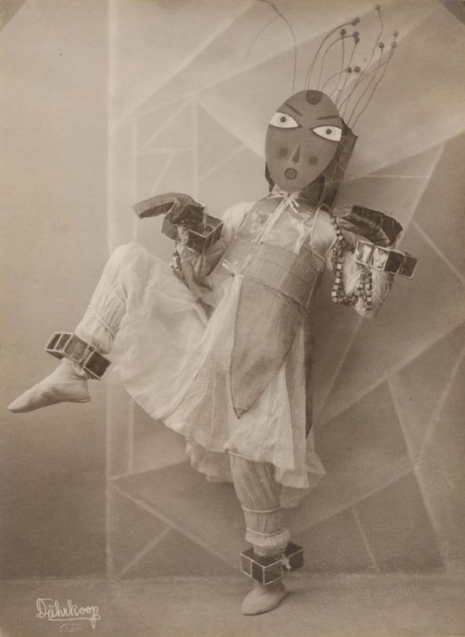
‘Insektentänzer.’
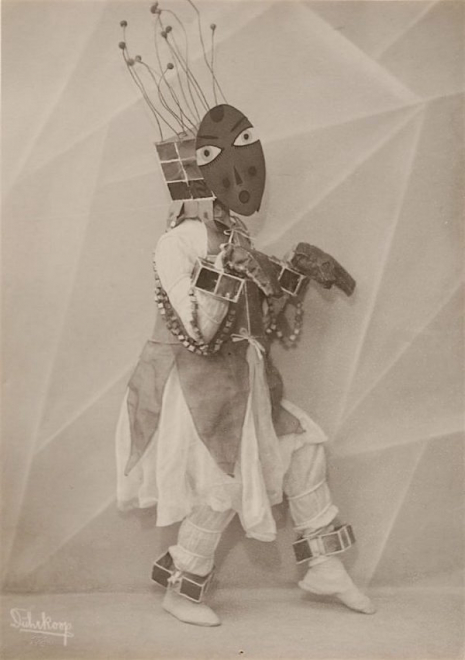
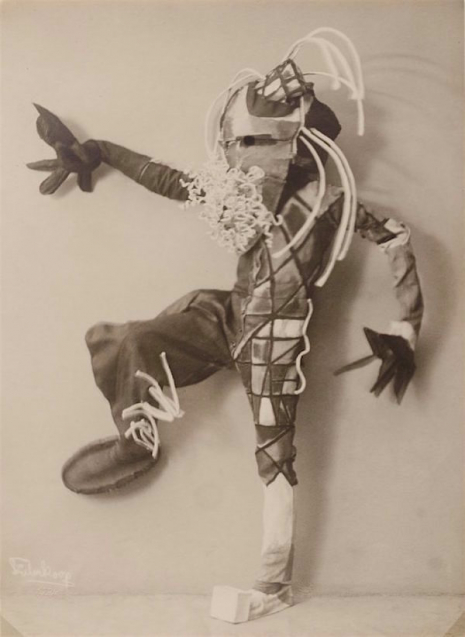
‘Toboggan.’

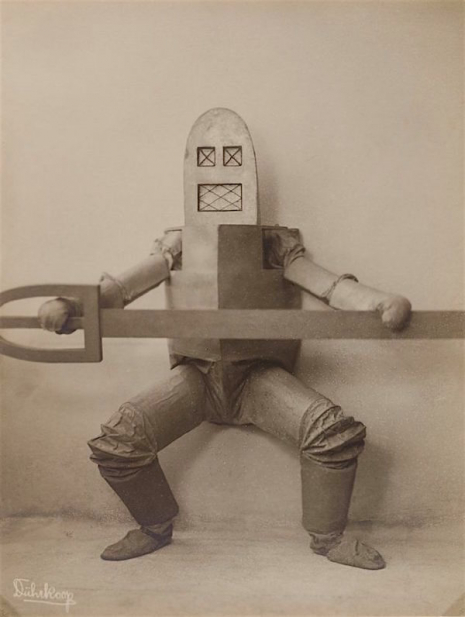
‘Skirnir.’

‘Bibo.’
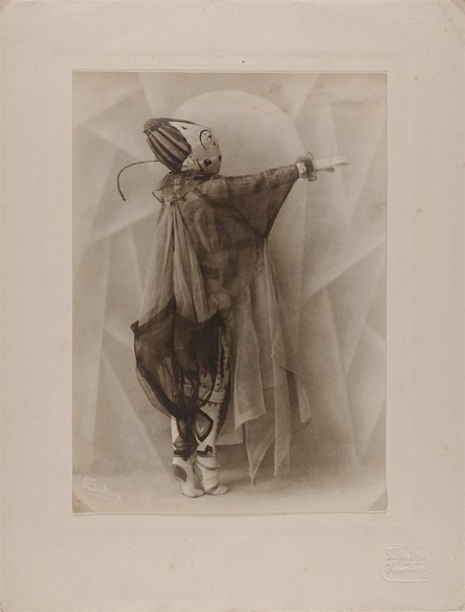
‘Sie.’
H/T La boite verte.
Previously on Dangerous Minds:
Meet Anita Berber: The ‘Priestess of Debauchery’ who scandalized Weimar Berlin
Nijinsky with a mohawk: The edgy collaborations of punk ballet dancer Michael Clark and The Fall
Meet the wild child ‘Tiger Woman’ who tried to kill Aleister Crowley
The Triadic Ballet: Eccentric Bauhaus ballet brilliance or is it Germanic Maude Lebowski art shit?
‘The Dance of Death’: Gnarly Medieval woodcuts of Hans Holbein
Meet the Swedish mystic who was the first Abstract artist